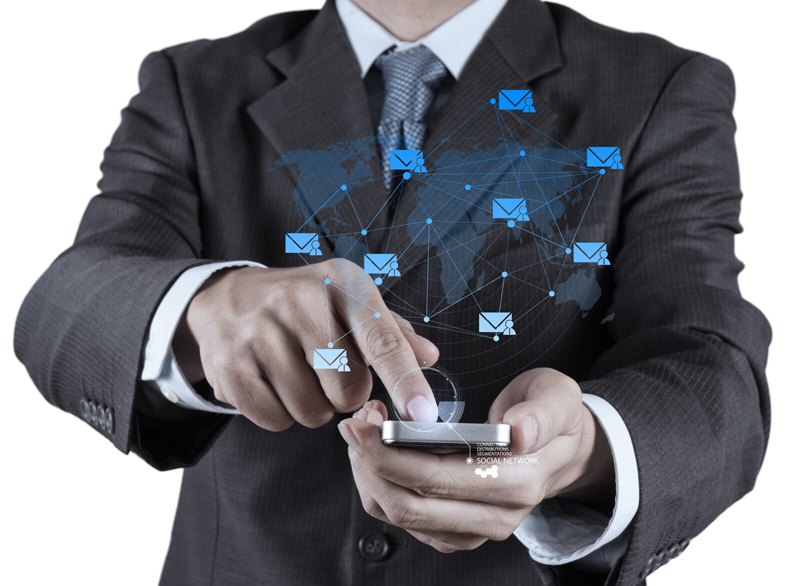Businesses use different communication methods, depending on their requirements and the audience they wish to address. Slide presentations, videos phone calls, face-to-face conversations, discussions and meetings are effective ways of communicating with employees and customers. Audio and video recordings can be converted into coherent, compelling documents with the help of professional transcription services. However, despite the increasing importance of oral and visual communication, written communication, especially email, is still a primary way people interact with each other in the business world.
Businesses use email to reach existing and new clients as well as to communicate with employees. According to a recent Perkbox Insights survey, 73% of businesses prefer email over other means of workplace communication (www.smallbiztrends.com). While email is widely used, it would be effective only if you follow some rules on etiquette, style, and format. In fact, a badly written email can tarnish your professional image. Here are 10 business email etiquette dos and don’ts:
- Consider your audience: The tone, formality, and content of the communication should be based on the reader, which could be a team member or other colleague, client, or manager. For instance, while the general recommendation is to avoid use of acronyms in emails, you can use project acronyms with a team member. On the other hand, such acronyms may be confusing for a HR or finance executive in your company. And don’t use emojis as they are considered unprofessional!
- Have a clear subject line: Write a clear subject line that tells the reader what the mail is about. Be focused, include keywords related to the subject at the beginning – this will make it searchable when needed. Keep the subject line short and simple. Based on a review of more than 40 million emails, leader in email productivity software Boomerang says that three to four words is the ideal length for a subject line.
- Keep the email as brief as possible: Define the issue, action items, and deadlines, if any, but keep it brief and avoid clichés. State your purpose for sending the mail at the very beginning. Most people don’t like or have time for lengthy emails, so go straight to the point. Writing with brevity can help you express your points quickly and effectively. Break up text into short sentences and paragraphs or use bullet points. CEO of Accenture’s North America business Julie Sweet says that employees who can put together emails that are really salient and to the point, are valued (www.cnbc.com).
- Use the right openings and closings: The accepted salutations for business emails are “Good Morning,” “Good Afternoon,” “Good Evening” or “Hello.” “Good Day” or “Greetings”. Standard endings include “Kind regards” “Thanks/thanks again”, “Regards”, and “Best wishes”. The important thing to remember is that the opening and closing should reflect professionalism and maturity. If a response is not needed, use an appropriate closing such as “No reply necessary,” or “See you at the project team meeting Wednesday”.
- Pay attention to grammar and spelling: Bad grammar and wrong spellings make emails look extremely unprofessional. Use the email software’s spell check. Make sure that the names of people and the company in question are spelt correctly. Always recheck the mail for spelling and grammatical errors before sending it out.
- Avoid “email incivility”: A study from the University of Illinois identified email incivility as sending rude or aggressive messages, marking non-urgent messages as high priority, or sending last-minute requests. According to the researchers, receiving negative or stressful work emails has a ripple effect on both an individual’s professional and personal life. Never send emails when you are upset about something or send out negative comments – the negativity can persist long after the mail has been sent and received. Be careful not use uppercase letters as this can suggest ‘shouting’. If you want to address sensitive or negative issues, speak up – make a phone call or schedule a face-to-face meeting.
- Respond promptly: When you receive an email, reply promptly. An article from www.entrepreneur.com notes that replying within 24 hours is common courtesy. If you need more to reply or have kept the person waiting for a long time, explain the situation and apologize.
- Optimize call to action: State the desired outcome of your message at the end and use a strong call to action. You can use underline or bold to draw attention to requests.
- Know best practices for attachments: Any type of file can be attached to an email message, but make sure that the recipient can open and read it. PDF is the ideal option when email attachments have to be sent to a large group. Double check your attachments before sending the mail to ensure that have included them. If the information you want to send is available on a webpage, experts recommend linking to that page instead of attaching a file (www.technology.pitt.edu). Avoid sending large email attachments, but if you need to, compress it into a smaller file.
- Use a proper business email format: Create a professional business email template with a short, clear body and default font size and color. Choose a font that is clean, uncluttered, and easy to read and avoid jarring colors. Ensure that the text is organized in brief paragraphs with spaces in between them. Large swathes of text or giant wordy paragraphs would be difficult to read.
Efficient communication tools are crucial for any business. Email is undoubtedly an effective and economical business communication tool. Using email appropriately and adhering to etiquette rules can help you project a professional image, and more important, ensure that your messages create the desired impact. On the other hand, face-to-face communication in the form of internal meetings, teleconferencing calls, and video presentations are important to promote participation, bonding and cooperation among employees. The interactions can also be recorded and documented for future reference using an online transcription service.




